1. Bartlett JG, Chang TW, Gurwith M, Gorbach SL, Onderdonk AB. Antibiotic-associated pseudomembranous colitis due to toxin-producing clostridia. N Engl J Med. 1978; 298(10):531–534. PMID:
625309.

2. Balram B, Battat R, Al-Khoury A, D’Aoust J, Afif W, Bitton A, et al. Risk factors associated with
Clostridium difficile Infection in inflammatory bowel disease: a systematic review and meta-analysis. J Crohn’s Colitis. 2019; 13(1):27–38. PMID:
30247650.

3. Kelly CR, Fischer M, Allegretti JR, LaPlante K, Stewart DB, Limketkai BN, et al. ACG clinical guidelines: prevention, diagnosis, and treatment of
Clostridioides difficile infections. Am J Gastroenterol. 2021; 116(6):1124–1147. PMID:
34003176.

4. Shim JK, Johnson S, Samore MH, Bliss DZ, Gerding DN. Primary symptomless colonisation by
Clostridium difficile and decreased risk of subsequent diarrhoea. Lancet. 1998; 351(9103):633–636. PMID:
9500319.

5. Burke KE, Lamont JT.
Clostridium difficile infection: a worldwide disease. Gut Liver. 2014; 8(1):1–6. PMID:
24516694.

6. Gujja D, Friedenberg FK. Predictors of serious complications due to
Clostridium difficile infection. Aliment Pharmacol Ther. 2009; 29(6):635–642. PMID:
19077106.

7. Kim J, Pai H, Seo MR, Kang JO. Epidemiology and clinical characteristics of
Clostridium difficile infection in a Korean tertiary hospital. J Korean Med Sci. 2011; 26(10):1258–1264. PMID:
22022175.

8. Kelly CP, LaMont JT.
Clostridium difficile--more difficult than ever. N Engl J Med. 2008; 359(18):1932–1940. PMID:
18971494.
9. Guo CL, Kwong TN, Mak JW, Zhang L, Lui GC, Wong GL, et al. Trends in incidence and clinical outcomes of
Clostridioides difficile infection, Hong Kong. Emerg Infect Dis. 2021; 27(12):3036–3044. PMID:
34812719.
10. Choi HY, Park SY, Kim YA, Yoon TY, Choi JM, Choe BK, et al. The epidemiology and economic burden of
Clostridium difficile infection in Korea. BioMed Res Int. 2015; 2015:510386. PMID:
25821807.
11. Kim YS, Han DS, Kim YH, Kim WH, Kim JS, Kim HS, et al. Incidence and clinical features of
Clostridium difficile infection in Korea: a nationwide study. Epidemiol Infect. 2013; 141(1):189–194. PMID:
22717061.

12. Bossuyt P, Verhaegen J, Van Assche G, Rutgeerts P, Vermeire S. Increasing incidence of
Clostridium difficile-associated diarrhea in inflammatory bowel disease. J Crohn’s Colitis. 2009; 3(1):4–7. PMID:
21172241.

13. Issa M, Vijayapal A, Graham MB, Beaulieu DB, Otterson MF, Lundeen S, et al. Impact of
Clostridium difficile on inflammatory bowel disease. Clin Gastroenterol Hepatol. 2007; 5(3):345–351. PMID:
17368234.
14. Song EM, Yang SK. Natural history of inflammatory bowel disease: a comparison between the East and the West. Intest Res. 2022; 20(4):418–430. PMID:
34852421.

15. Yen HH, Weng MT, Tung CC, Wang YT, Chang YT, Chang CH, et al. Epidemiological trend in inflammatory bowel disease in Taiwan from 2001 to 2015: a nationwide population-based study. Intest Res. 2019; 17(1):54–62. PMID:
30449079.

16. Ye BD, Choi H, Hong M, Yun WJ, Low HQ, Haritunians T, et al. Identification of ten additional susceptibility loci for ulcerative colitis through immunochip analysis in Koreans. Inflamm Bowel Dis. 2016; 22(1):13–19. PMID:
26398853.

17. Nguyen GC, Kaplan GG, Harris ML, Brant SR. A national survey of the prevalence and impact of
Clostridium difficile infection among hospitalized inflammatory bowel disease patients. Am J Gastroenterol. 2008; 103(6):1443–1450. PMID:
18513271.

18. Barber GE, Hendler S, Okafor P, Limsui D, Limketkai BN. Rising incidence of intestinal infections in inflammatory bowel disease: a nationwide analysis. Inflamm Bowel Dis. 2018; 24(8):1849–1856. PMID:
29722832.

19. Singh H, Nugent Z, Yu BN, Lix LM, Targownik LE, Bernstein CN. Higher incidence of
Clostridium difficile infection among individuals with inflammatory bowel disease. Gastroenterology. 2017; 153(2):430–438.e2. PMID:
28479377.

20. Kaneko T, Matsuda R, Taguri M, Inamori M, Ogura A, Miyajima E, et al.
Clostridium difficile infection in patients with ulcerative colitis: investigations of risk factors and efficacy of antibiotics for steroid refractory patients. Clin Res Hepatol Gastroenterol. 2011; 35(4):315–320. PMID:
21435967.

21. Nomura K, Fujimoto Y, Yamashita M, Morimoto Y, Ohshiro M, Sato K, et al. Absence of pseudomembranes in
Clostridium difficile-associated diarrhea in patients using immunosuppression agents. Scand J Gastroenterol. 2009; 44(1):74–78. PMID:
18781540.

22. Kim DB, Lee KM, Park SH, Kim YS, Kim ES, Lee J, et al. Is
Clostridium difficile infection a real threat in patients with ulcerative colitis? A prospective, multicenter study in Korea. Intest Res. 2018; 16(2):267–272. PMID:
29743839.

23. Li Y, Xu H, Xu T, Xiao M, Tang H, Wu D, et al. Case-control study of inflammatory bowel disease patients with and without
Clostridium difficile infection and poor outcomes in patients coinfected with
C. difficile and cytomegalovirus. Dig Dis Sci. 2018; 63(11):3074–3083. PMID:
30094621.

24. Rodemann JF, Dubberke ER, Reske KA, Seo DH, Stone CD. Incidence of
Clostridium difficile infection in inflammatory bowel disease. Clin Gastroenterol Hepatol. 2007; 5(3):339–344. PMID:
17368233.

25. Joshi NM, Marks IH, Crowson R, Ball D, Rampton DS. Incidence and outcome of
Clostridium difficile infection in hospitalized patients with inflammatory bowel disease in the UK. J Crohn’s Colitis. 2017; 11(1):70–76. PMID:
27302972.

26. Navaneethan U, Mukewar S, Venkatesh PG, Lopez R, Shen B.
Clostridium difficile infection is associated with worse long term outcome in patients with ulcerative colitis. J Crohn’s Colitis. 2012; 6(3):330–336. PMID:
22405170.

27. Guh AY, Mu Y, Winston LG, Johnston H, Olson D, Farley MM, et al. Trends in U.S. burden of
Clostridioides difficile infection and outcomes. N Engl J Med. 2020; 382(14):1320–1330. PMID:
32242357.

28. Guh AY, Mu Y, Baggs J, Winston LG, Bamberg W, Lyons C, et al. Trends in incidence of long-term-care facility onset
Clostridium difficile infections in 10 US geographic locations during 2011-2015. Am J Infect Control. 2018; 46(7):840–842. PMID:
29329918.

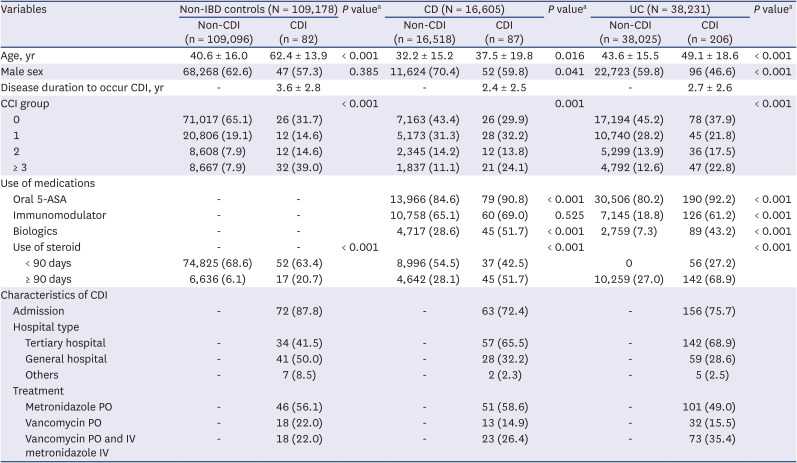
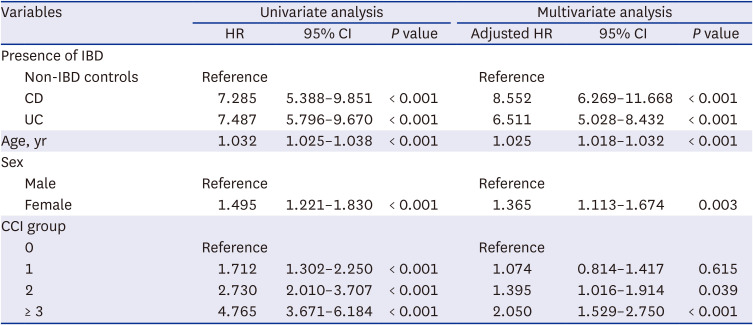
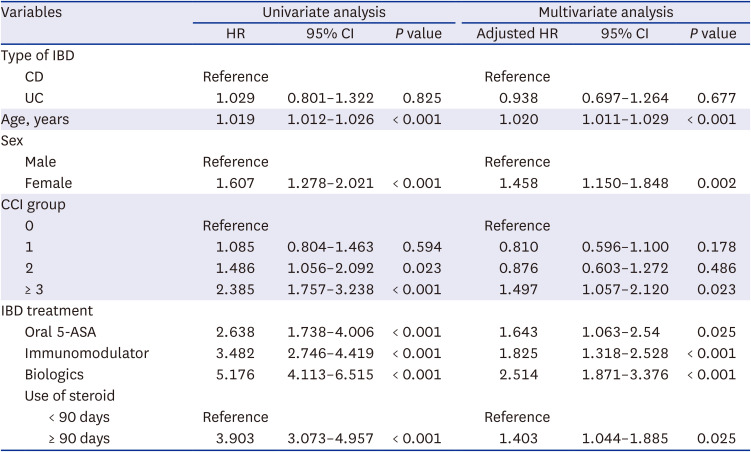




 PDF
PDF Citation
Citation Print
Print



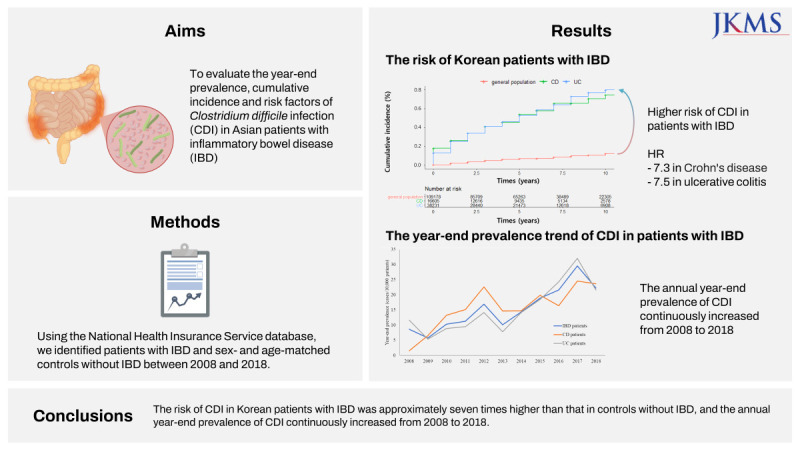
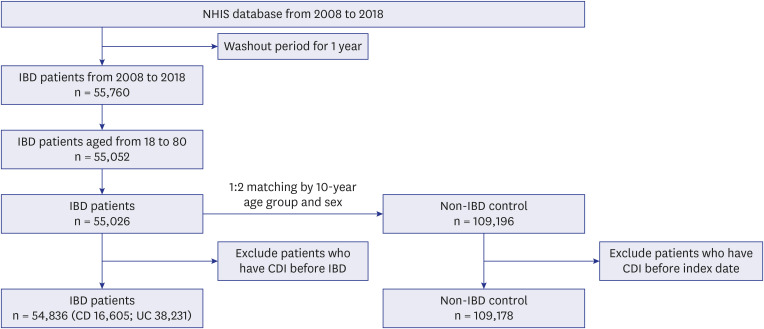
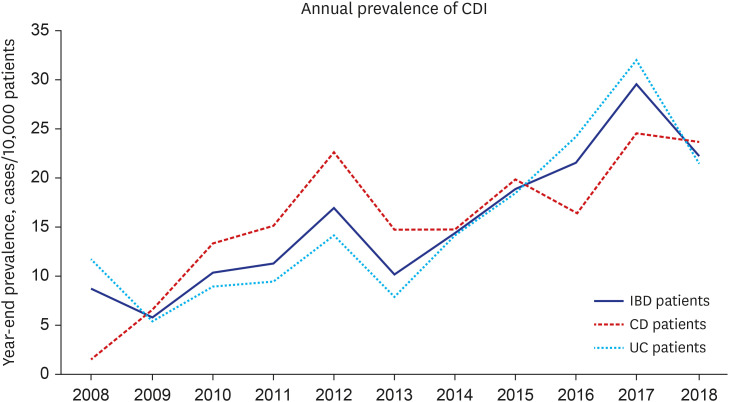
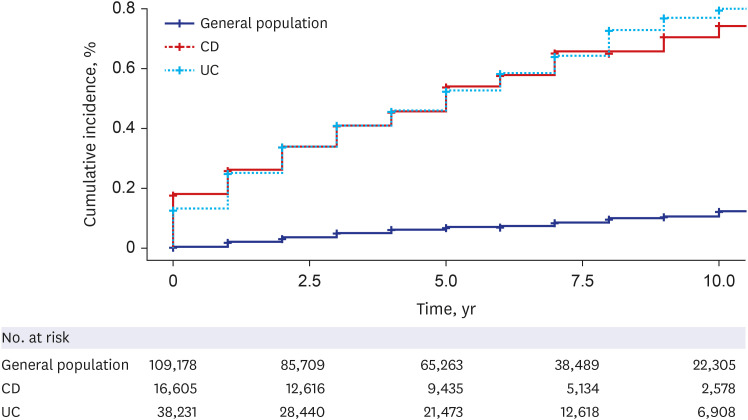
 XML Download
XML Download